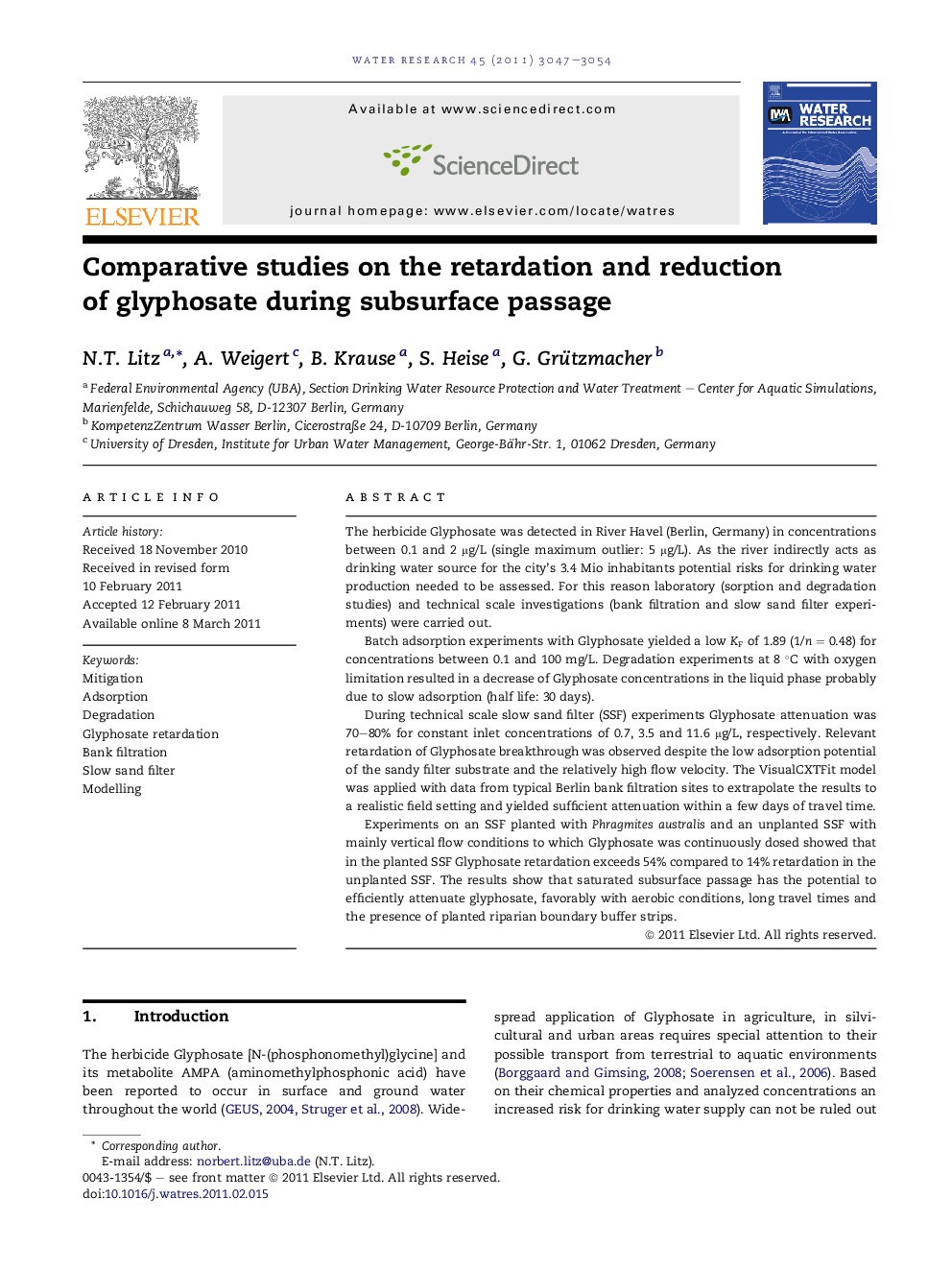| Article ID | Journal | Published Year | Pages | File Type |
|---|---|---|---|---|
| 4483235 | Water Research | 2011 | 8 Pages |
The herbicide Glyphosate was detected in River Havel (Berlin, Germany) in concentrations between 0.1 and 2 μg/L (single maximum outlier: 5 μg/L). As the river indirectly acts as drinking water source for the city’s 3.4 Mio inhabitants potential risks for drinking water production needed to be assessed. For this reason laboratory (sorption and degradation studies) and technical scale investigations (bank filtration and slow sand filter experiments) were carried out.Batch adsorption experiments with Glyphosate yielded a low KF of 1.89 (1/n = 0.48) for concentrations between 0.1 and 100 mg/L. Degradation experiments at 8 °C with oxygen limitation resulted in a decrease of Glyphosate concentrations in the liquid phase probably due to slow adsorption (half life: 30 days).During technical scale slow sand filter (SSF) experiments Glyphosate attenuation was 70–80% for constant inlet concentrations of 0.7, 3.5 and 11.6 μg/L, respectively. Relevant retardation of Glyphosate breakthrough was observed despite the low adsorption potential of the sandy filter substrate and the relatively high flow velocity. The VisualCXTFit model was applied with data from typical Berlin bank filtration sites to extrapolate the results to a realistic field setting and yielded sufficient attenuation within a few days of travel time.Experiments on an SSF planted with Phragmites australis and an unplanted SSF with mainly vertical flow conditions to which Glyphosate was continuously dosed showed that in the planted SSF Glyphosate retardation exceeds 54% compared to 14% retardation in the unplanted SSF. The results show that saturated subsurface passage has the potential to efficiently attenuate glyphosate, favorably with aerobic conditions, long travel times and the presence of planted riparian boundary buffer strips.
► The behaviour of Glyphosate in batch- and anaerobic dissipations tests was investigated. ► Glyphosate dissipation studies were carried out in Slow Sand Filter and enclosure experiments in a semi-technical scale. ► Enclosure experiments simulating bank filtration processes show strong elimination of glyphosate. ► Unplanted and planted Slow Sand Filter used as riparian buffer strips may although retard glyphosate.
